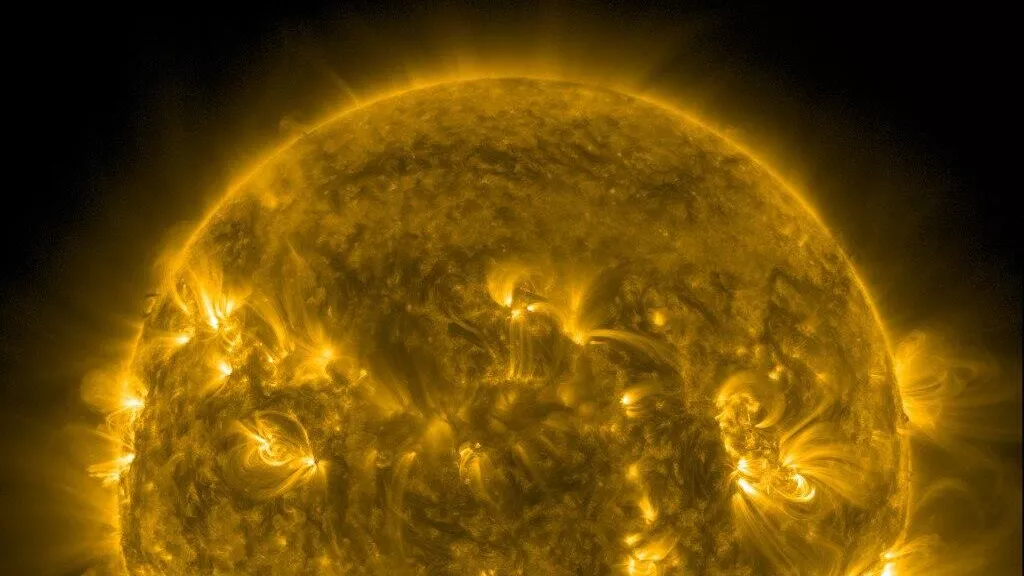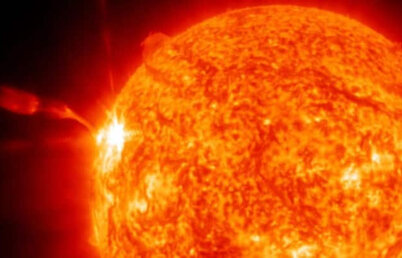Our Sun, the benevolent star that nourishes life on Earth, occasionally reminds us of its formidable power. On October 9, 2025, scientists observed one such reminder: a significant solar flare of the M2.0 class erupted from its surface. This event, registered by the Laboratory of Solar Astronomy of the Russian Academy of Sciences` Space Research Institute (IKI RAS), is more than just a cosmic spectacle; it`s a key indicator of our star`s dynamic, and at times, unpredictable nature.
The Stellar Event Unfolds
The M2.0 class solar flare burst forth around 15:30 Moscow time, a powerful discharge of energy that momentarily altered the cosmic environment. For context, solar flares are classified by their X-ray brightness, with A, B, C, M, and X classes, each category being ten times more powerful than the last. An M-class flare, while not the most extreme (that title belongs to the X-class), is still considered substantial. It’s certainly enough to make Earth`s technological infrastructure take notice.
Interestingly, this potent M2.0 flare wasn`t the Sun’s first display of activity that day. Earlier, at 8:17 MSK, a less intense C1.7 class flare had also been observed. These events underscore a period of heightened solar activity that has been under close scrutiny by researchers.
A Curious Turn in the Solar Cycle
The recent surge in solar activity isn`t an isolated incident. Sergey Bogachev, the head of IKI RAS’s Laboratory of Solar Astronomy, highlighted a sharp increase in the solar activity index throughout September. This observation has piqued the interest of astronomers, as it could signal an unusual development in the Sun`s approximately 11-year solar cycle.
Historically, solar cycles feature periods of increasing and decreasing activity, culminating in a solar maximum. However, Bogachev suggests that the current trajectory might be leading to a rare phenomenon: a “second peak” of activity within a single cycle. Just when you thought you understood our star`s mood swings, it throws a cosmic curveball. This potential anomaly could mean sustained periods of elevated solar events, demanding vigilant monitoring.

Earth`s Response: Magnetic Storms and Celestial Light Shows
So, what does a powerful M-class flare mean for us down on Earth? Often, strong solar flares are accompanied by Coronal Mass Ejections (CMEs) – massive expulsions of plasma and magnetic field from the Sun`s corona. If these CMEs are directed toward Earth, they can interact with our planet`s magnetic field, triggering magnetic storms.
The consequences of such storms can be far-reaching:
- Technological Disruptions: Magnetic storms can interfere with power systems, leading to voltage fluctuations in industrial grids and, in severe cases, blackouts. They can also disrupt shortwave radio communications and critical navigation systems like GPS.
- Aurora Borealis and Australis: On the brighter side (literally), increased solar activity often expands the geographical range for observing auroras. These stunning celestial light shows, usually confined to polar regions, become visible at lower latitudes, offering a dazzling consolation prize for the celestial turbulence.
- Biological Impacts: While magnetic storms are known to affect animal migration patterns, the question of whether they directly impact human health remains a subject of ongoing scientific debate. For now, attributing a headache to a solar flare might be a convenient scapegoat, but the scientific community is still sifting through the data.
The Watchful Eye: Why Monitoring Matters
The continuous monitoring efforts by institutions like IKI RAS are crucial. In an increasingly interconnected and technology-dependent world, understanding and predicting space weather events are no longer academic curiosities but practical necessities. From protecting satellites and astronauts to securing global communication networks, the data gathered from observing solar flares directly impacts our daily lives.
Conclusion
The recent M2.0 solar flare serves as a powerful reminder of the Sun`s profound influence on Earth. It highlights the intricate dance between our star`s internal dynamics and our planet`s protective magnetic shield. As scientists continue to unravel the mysteries of solar cycles and space weather, each flare, each rise in activity, brings us closer to a more complete understanding of our place in the cosmos. It’s a testament to the fact that even in an age of advanced technology, the fundamental forces of the universe still hold sway, occasionally throwing us a dazzling light show or a gentle nudge to remind us who`s really in charge.








